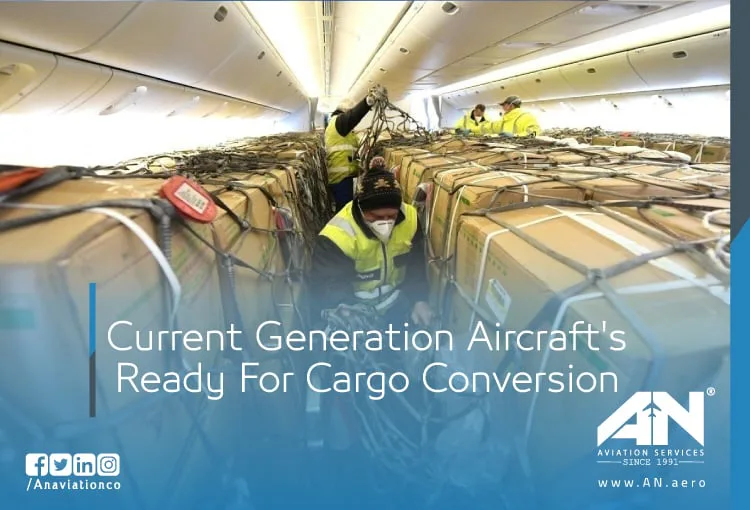
The global aviation industry is undergoing a significant transformation, and cargo conversion is at the forefront of this change. With the rise of e-commerce, increased demand for fast deliveries, and the lasting effects of the COVID-19 pandemic, airlines and leasing companies are reimagining how to extend the lifespan of current-generation passenger aircraft. Converting passenger aircraft into freighters has become an efficient solution for meeting these demands, offering a second life to planes while ensuring economic viability.
But what exactly is cargo conversion, and why are current-generation aircraft so well-suited for this process? Let’s explore the details and discover how this trend is shaping the future of aviation logistics.
What Is Cargo Conversion?
In simple terms, cargo conversion refers to the process of transforming a passenger aircraft into a freighter designed to carry goods instead of people. This involves significant modifications to the aircraft, including removing passenger seats, reinforcing the flooring to support heavier loads, and installing large cargo doors for easy loading and unloading.
Aircraft that undergo cargo conversion are often referred to as Passenger-to-Freighter (P2F) aircraft. These planes are typically repurposed after they’ve completed their operational lifespan as passenger carriers but still have years of airworthiness left.
Why Convert Current-Generation Aircraft?
The aviation industry is increasingly turning to current-generation aircraft for cargo conversions, and for good reason. These planes offer the ideal combination of modern technology, fuel efficiency, and cargo capacity, making them perfect candidates for a second life as freighters.
Here are the key reasons why current-generation aircraft are ready for cargo conversion:
1. Sustainability and Cost-Effectiveness:
Instead of retiring an aircraft or scrapping it for parts, converting it into a freighter is an environmentally friendly and cost-effective solution. By extending the aircraft’s lifespan, airlines can maximize their investment while reducing waste.
2. Growing Demand for Air Cargo:
The global growth of e-commerce, accelerated by the pandemic, has created a massive demand for air cargo services. Current-generation aircraft, with their improved fuel efficiency and range, can meet the logistical needs of businesses requiring fast deliveries across long distances.
3. Advanced Technology and Efficiency:
Modern aircraft such as the Boeing 737-800 and Airbus A321 offer advanced avionics, improved fuel efficiency, and lower maintenance costs compared to older models. These factors make them ideal candidates for cargo conversion.
4. Ample Availability:
As airlines modernize their fleets, many current-generation aircraft are being retired early to make way for newer models. This creates a surplus of high-quality planes that can be converted into freighters.
The Cargo Conversion Process
The process of cargo conversion involves several stages and requires specialized expertise. Once an aircraft has been identified for conversion, it undergoes the following steps:
- Removing Passenger Features: Seats, overhead bins, and other cabin elements are removed to create a spacious cargo bay.
- Reinforcing the Structure: The aircraft’s floor is strengthened to handle the weight of heavy cargo loads.
- Installing Cargo Doors: Large doors are added to allow easy loading and unloading of goods.
- Testing and Certification: The converted aircraft undergoes rigorous testing to ensure it meets safety standards and is certified for cargo operations.
Popular Aircraft Models for Cargo Conversion
Not all aircraft are suitable for conversion, but certain models stand out due to their size, range, and fuel efficiency. Current-generation aircraft that are frequently converted include:
- Boeing 737-800: Known for its reliability and fuel efficiency, this narrow-body aircraft is a popular choice for regional and domestic cargo operations.
- Airbus A321: This aircraft offers excellent cargo capacity and fuel efficiency, making it a favorite for short- to medium-haul routes.
- Boeing 767-300ER: With its larger size and long-range capabilities, this wide-body aircraft is ideal for international cargo operations.
Cargo Conversion Beyond Aircraft
Interestingly, the concept of conversion is not limited to airplanes. The trend has inspired other innovative transformations, such as turning a cargo trailer camper into a cozy tiny home or converting a cargo trailer for recreational use. These creative solutions demonstrate how unused equipment can be repurposed for entirely new applications, reducing waste and maximizing utility.
In the aviation world, the idea remains the same: take an underutilized resource and adapt it for a new purpose.
Challenges and Considerations
While cargo conversion offers numerous benefits, it also comes with its challenges. Airlines and leasing companies must carefully assess the feasibility of conversion, considering factors such as:
- Conversion Costs: The process can be expensive, and operators must ensure that the investment will yield long-term returns.
- Regulatory Compliance: Converted aircraft must meet strict safety standards and obtain certification before they can begin operations.
- Market Demand: Operators must evaluate market trends and ensure there is sufficient demand for air cargo services in their region.
The Future of Cargo Conversion
The future of cargo conversion looks promising as the aviation industry continues to adapt to changing demands. With the rise of sustainable aviation practices, advancements in technology, and the increasing need for air cargo capacity, current-generation aircraft will play a vital role in meeting global logistics needs.
Additionally, as e-commerce and global trade grow, airlines will continue to invest in converted freighters to remain competitive. This trend not only supports the circular economy but also ensures a more sustainable future for aviation.
Conclusion
The cargo conversion of current-generation aircraft is a testament to the aviation industry’s ability to innovate and adapt. By repurposing passenger planes into freighters, airlines can extend the lifespan of their fleets, meet growing cargo demands, and contribute to sustainability efforts.
Whether it’s a retired Airbus A321 or a converted cargo trailer turned into a unique tiny home, the concept of conversion demonstrates the endless possibilities of repurposing valuable resources. For the aviation sector, cargo conversion is more than just a cost-effective solution—it’s a strategy for navigating a rapidly evolving industry.
As the skies become busier and cargo needs grow, converted freighters will undoubtedly become an essential part of modern aviation logistics.

